One of the key food trends recently has been diversification. Customers are looking to eat foods they have never tried before, whether its global flavors, meat substitutes, or probiotic-rich dishes. For that reason, it’s not surprising that game meat is making its way onto menus around the world. Instead of just offering your patrons beef, pork, or chicken, we’ll introduce you to specialty meat substitutes that are sure to turn heads and keep your customers coming back for more.
Shop All Specialty MeatsWhat Is Game Meat?
Game meat is meat from an animal that is typically found in the wild and not raised domestically on a farm for mass consumption. Game animals are usually free-roaming foragers and hunted for their meat. However, for commercial purposes, most game animals are raised on supervised pastures, rounded up, and inspected through the butchering process instead of being hunted in the wild. Game meat is a great source of nutrient-rich protein for a diverse menu.
Game meat can generally be sorted into 3 categories of game meat types:
- Winged Game: Pheasant, Squab, Quail, Guinea Fowl, Partridge, Duck, Turkey
- Ground Game: Rabbit, Hare, Squirrel
- Big Game: Bison, Venison, Elk, Water Buffalo, Goat, Wild Boar
Can Wild Game Be Served in a Restaurant?
While game meat can be served in restaurants, wild game cannot. The game meat you find on restaurant menus is ordered from game ranches and enclosed pastures and not acquired through hunting practices.
Game farms operating under the Fish & Wildlife Supervision are able to monitor the health of a herd and inspect the meat according to USDA standards before it is distributed to foodservice suppliers. If you are serving game meat, be sure to list where it is sourced from on your menu for food transparency. This will also boost your customers’ interest in your specialty meat options.
Game Meats List
If you’re looking to add game meat recipes to your restaurant's menu, we’ve created a guide to introduce you to protein substitutions and teach you how to cook game meat for your customers.
1. Quail

Quail is one of the smallest game birds used on restaurant menus. The difference between quail vs chicken is that quail is typically only 4-6 oz. in weight, whereas a chicken is usually 5-7 lb. You can find slightly larger quail species, such as the jumbo brown Coturnix quail, which weighs around 12-14 oz. The size of a quail makes it suitable as a small entree or part of an appetizer.
What Does Quail Taste Like?
Quail has a slightly sweeter flavor than chicken, more akin to duck meat.
How to Prepare Quail
Quail can be roasted whole or spatchcocked and grilled for an eye-catching presentation. You can also pan roast or fry the meat for a delicious appetizer. Because of its size, so be sure to marinade it during your prep process and baste it with fat while cooking. Quail also cooks quickly, so monitor it until it reaches the internal temperature of 160 degrees Fahrenheit..
Expand your menu with these quail recipes:
- Cajun Quail on Grits
- Grilled Quail Arugula Salad
- Honey Roasted Quail with Mashed Potatoes
What Goes Well With Quail?
Pair your quail meat with the following flavors:
- Fruit: Oranges, pomegranate, cranberries, grapes, goji berries
- Cooking Wine and Liquor: White wine, red wine, cognac, port, sherry
- Spices: Coriander, cumin, black pepper, garlic powder, Chinese 5 spice
2. Pheasant
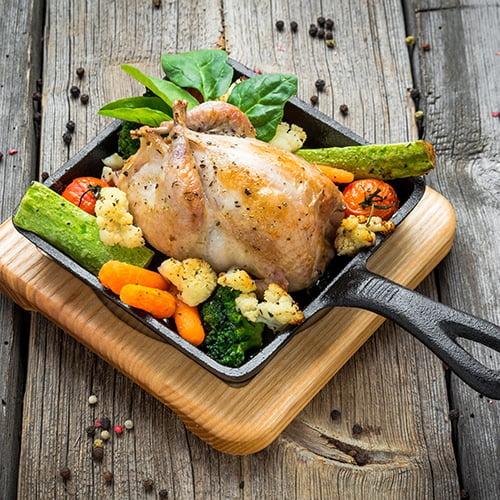
When comparing pheasant vs chicken, pheasant is similar in size to chicken but is slightly lower in total fat and cholesterol. It also has more protein than chicken and has a smokier, earthy flavor. Because of its subtle flavor, pheasant is considered to be one of the most approachable of the game birds and makes a great alternative to chicken or turkey. It is excellent for intimate holiday meals due to its manageable portion size.
What Does Pheasant Taste Like?
Pheasant has a subtle smokey and earthy flavor when compared to chicken.
How to Prepare Pheasant
Pheasant needs to be cooked on low heat with moisture added during the cooking process or else it can easily dry out. This lean meat can be roasted whole or deboned and prepared in pieces. To add moisture to the meat, rub the bird in butter or oil and then baste it as it cooks until it reaches the internal temperature of 160 degrees Fahrenheit.
Try these pheasant recipes on your menu:
- Pheasant Sausage and Potatoes
- Pheasant Pot Pie
- Bacon-Wrapped Pheasant on Rice
What Goes Well With Pheasant?
The flavor of pheasant pairs well with the following ingredients:
- Herbs: Thyme, rosemary, sage
- Fruit: Apricots, apples, oranges, prunes
- Cooking Wine and Liquor: White wine, red wine, cognac, port
3. Squab

Squab is the meat from a young pigeon, and if you compare squab vs chicken, squab is smaller in size (usually only 1 lb. or less) and more tender in texture than chicken. Like duck, squab only contains dark meat. Its petite size makes it perfect for individual servings.
What Does Squab Taste Like?
Squab had a gamey flavor similar to duck.
How to Prepare Squab
Since squab is so small with little meat on the legs, it is usually cooked to 125 degrees Fahrenheit and served whole. It can be pan-roasted, oven-roasted, sauteed, braised, or cooked on the grill for a nice smokey flavor. Be sure to baste the meat during the cooking process to keep it from drying out.
Here are some ideas for squab recipes:
- Roasted Squab Frisee Salad
- Squab with Wild Rice and Mushrooms
- Chinese Fried Squab
What Goes Well With Squab?
Squab pairs well with the following flavors:
- Fruit: Apples, figs, pears, prunes, grapes
- Root Vegetables: Carrots, beets, turnips
- Types of Sweet Vinegar: Balsamic vinegar, fig vinegar, red wine vinegar
4. Bison
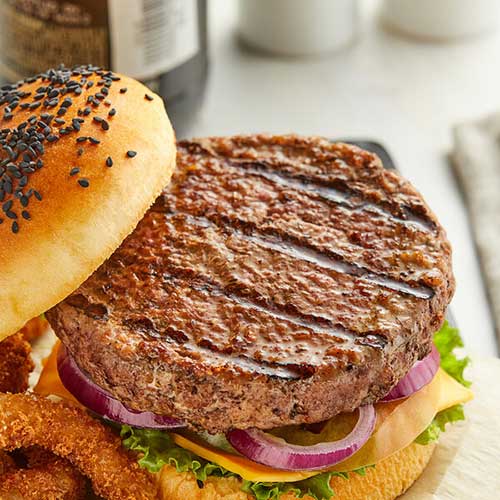
Bison, often inaccurately referred to as a buffalo, is very similar to cattle in anatomy and can offer a direct replacement for your favorite cuts of meat. Because most bison are raised in open pastures, they are considered a more sustainable option over beef.
What Does Bison Taste Like?
When comparing bison vs beef, bison meat has a subtle earthy and sweet flavor to it and is leaner than beef.
How to Prepare Bison
Because bison meat is so similar to beef, you would cook it the same way, altering the cooking method based on the cuts of meat. Bison meat is delicious when grilled, braised, or stewed. Popular bison cuts include sirloin, short ribs, tenderloin, flank, and chuck. The meat can be ground for patties and tacos as well. The internal temperature for bison meat should reach 145 degrees Fahrenheit for safe steak doneness and 160 degrees Fahrenheit for ground meat.
Add these bison recipes for your customers to enjoy:
- Blue Cheese Bison Burgers
- Pan-Seared Bison Steak
- Texas-Style BBQ Bison Brisket
What Goes Well With Bison?
Complement your bison cuts with these flavors:
- Earthy Vegetables: Mushrooms, beets, carrots, parsnips
- Herbs: Thyme, rosemary, parsley, cilantro
- Sauces: Mustard, horseradish, ketchup, aioli
5. Elk

Elk offers an excellent replacement for beef because it's available in many of the same cuts. When comparing elk vs beef, elk meat is leaner and more nutrient-dense, providing a great source of iron, protein, and B12.
What Does Elk Taste Like?
The flavor of elk meat can vary depending on the animal's diet, but it usually tastes similar to beef with a slightly sweet flavor.
How to Prepare Elk
Elk has a low-fat content, so it is prone to drying out in the cooking process. Be sure to keep an eye on the meat, baste tender cuts with oil or butter, and cook tougher cuts low and slow. Elk can be pan-seared, grilled, roasted, stewed, or turned into patties for burgers. Elk should be cooked until the internal temperature reads 130 degrees Fahrenheit for rare meat.
Incorporate these elk recipes into your menu for a unique twist:
- Elk Filet Mignon on Rice Pilaf
- Ground Elk Stroganoff
- Grilled Red Wine Elk Steak with Roasted Potatoes
What Goes Well With Elk?
Because of elk’s mild flavors, it pairs well with these ingredients:
- Root Vegetables: Turnips, carrots, sweet potatoes, garlic, onions
- Sauces: Soy sauce, Worcestershire sauce, dijon mustard, balsamic vinegar
- Fruits: Lemon, blueberry, blackberry, cranberries, red currant
6. Venison

Venison, or deer meat, is a game meat that many recreational hunters are familiar with, but it is not often found on restaurant menus. The meat from a deer is also less fatty than beef and rich in vitamin B6, B12, and iron, making it a leaner and healthier red meat menu alternative.
What Does Venison Taste Like?
Venison has a stronger gamey flavor and tougher texture when comparing venison vs beef.
How to Prepare Venison
Venison must be properly tenderized or dry-aged to ensure that it doesn't become too chewy and tough during the cooking process. Since it does not have fat marbling in the meat, it can get overcooked quickly. Venison responds best to braising, slow-cooking, smoking, or pressure cooking. Venison cooks faster than beef, so make sure to sear a venison steak while monitoring the internal temperature until it reaches 145 degrees Fahrenheit. Let the meat rest for about 10 minutes before slicing and serving.
Try your hand at these venison recipes:
- Hearty Venison Stew
- Venison Wellington
- Venison Pot Roast
What Goes Well With Venison?
The gamey flavor of venison pairs well with the ingredients below:
- Fruits: Dates, pomegranate, cherries, blueberries
- Earthy Vegetables: squash, mushrooms, potatoes, carrots
- Herbs: Sage, rosemary, sweet marjoram, bay leaves
7. Wild Boar

Wild boar and domestic pig are both from the swine family but are differentiated by their looks and living environment. Because wild boars adapted to woodland environments, their hide is covered in coarse hair and their canine teeth are pronounced and slightly sharpened to aid in foraging. The difference between wild boar vs pig is that the meat of a wild boar is much leaner, sweeter, and darker in color compared to barnyard pigs. It is important to note that the wild boar listed on menus are pasture-raised and not hunted from the wild.
What Does Wild Boar Taste Like?
Wild boar is sweeter in flavor than pork.
How to Prepare Wild Boar
Ham is often the centerpiece of Christmas dinners, but it is not the only option available for your menu. You can find the same cuts of boar meat that you would use for pork. However wild boar is leaner, so it is best cooked low and slow. Wild boar is often braised, roasted, or stewed, with popular cuts including shoulder, tenderloin, rib back, and strip loin. You can also prepare wild boar in a smoker to serve your customers some delicious smoked meat. Wild boar should be cooked to 145 degrees Fahrenheit for whole cuts and 165 degrees Fahrenheit for ground meats to be safe.
Try these wild boar recipes for your restaurant:
- Braised Boar Shanks with Honey Glaze on Sauerkraut
- Pulled Wild Boar Sliders
- Wild Boar Chili
What Goes Well With Wild Boar?
The rich flavor of wild boar pairs well with the following ingredients:
- Vegetables: Mushrooms, onions, tomatoes
- Sauces: Barbecue sauces, soy sauce, grape jelly
- Wine: Red wine, Marsala wine, cognac
8. Goat
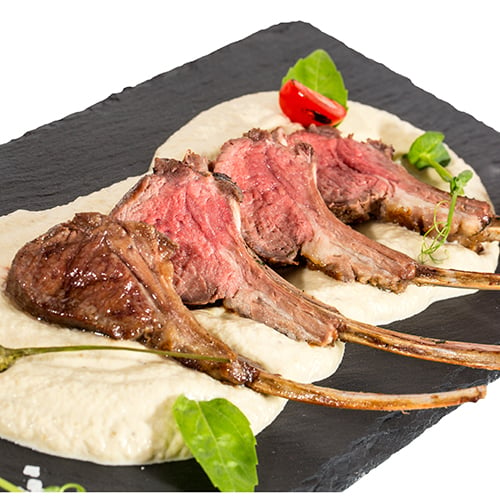
Many customers may be familiar with lamb meat, but goat meat may be a little more exotic for most. Although sheep and goats are both in the Bovidae family, goat meat has a consistency that is more akin to beef than lamb. Goat meat is lower in fat, cholesterol, and calories than lamb, pork, or beef, which means it is a great alternative for health-conscious customers.
What Does Goat Taste Like?
The difference between lamb vs goat meat is that goat is leaner and slightly milder and sweeter than lamb.
How to Prepare Goat
The most popular cuts of goat are goat chops, ribs, loin, and leg, making it versatile for your menu. Goat should be thoroughly cooked and benefits from slow cooking to make the lean meat tender. Goat meat can also be Halal butchered to help meet your customers’ dining requirements. Goat should be cooked to the internal temperature of 160 degrees Fahrenheit.
The following are just some of the goat recipes you can incorporate into your menu:
- Braised Goat Tagine
- Char-Grilled Goat Kabobs
- Goat Meatballs with Yellow Rice
What Goes Well With Goat?
Pair your goat meat entrees with these bold flavors:
- Spice: Turmeric, sumac, cayenne pepper, smoked paprika
- Herbs: Mint, basil, cilantro, parsley
- Cream: Greek yogurt, coconut milk, sour cream
9. Rabbit
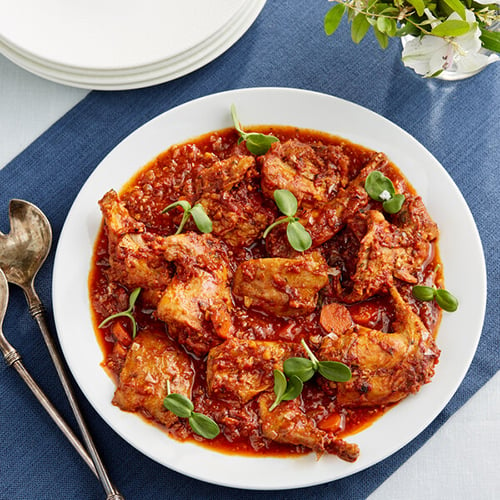
Rabbit meat is considered a healthy source of white meat, rich in omega-3 fatty acids, vitamin B12, potassium, and calcium. It can be a great substitution for chicken options on your menu.
What Does Rabbit Taste Like?
Rabbit is often described as tasting like chicken but with a stronger and earthier flavor.
How to Prepare Rabbit
The lean meat of rabbit is low in cholesterol and fat, which means it needs to be basted and cooked slowly until it reaches an internal temperature of 160 degrees Fahrenheit to keep it from drying out. Try these rabbit recipes to diversify your menu:
- Rabbit and Dumplings
- Kentucky Fried Rabbit
- Rabbit Sausage
What Goes Well with Rabbit?
Rabbit meat pairs well with rosemary, sage, garlic, prunes, and mustard sauce.
10. Alligator
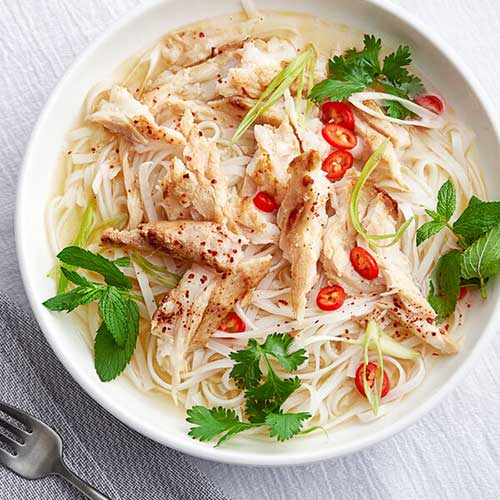
Alligator has tender meat that is similar to the texture of pork but is higher in nutritional value, being low in fat and high in iron. Try swapping out seafood or chicken options on your menu with alligator meat to impress your customers.
What Does Alligator Taste Like?
Most people will say that alligator tastes like chicken with a slightly fishy flavor.
How to Prepare Alligator
Generously marinade and tenderize your alligator meat to reduce any fishy flavor or tough texture it may have before grilling, baking, or frying. Alligator meat cooks quickly so be sure to keep an eye on its internal temperature, which should reach 165 degrees Fahrenheit. Here are some alligator recipes to explore:
- Alligator Gumbo or Jambalaya
- Cajun Fried Alligator Tail
- Alligator Sliders
What Goes Well with Alligator?
Alligator is used in many cajun recipes and pairs well with cayenne pepper, hot sauce, bell peppers, mustard, and red wine vinegar.
11. Ostrich
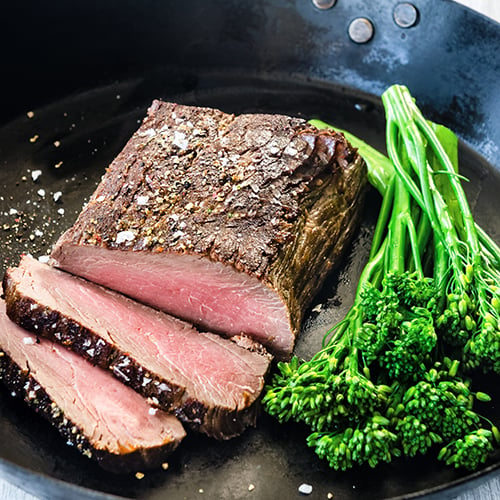
Although ostriches are birds, their meat is more similar to beef rather than chicken. Ostrich offers lean red meat that can be grilled, barbecued, or turned into delicious burgers.
What Does Ostrich Taste Like?
Ostrich meat tastes similar to prime beef, filet steak, or veal.
How to Prepare Ostrich
Because of its low fat content, it should be basted with high-fat marinades to retain moisture and cooked until it reaches an internal temperature of at least 150 degrees Fahrenheit for rare meat. Cook up some of these ostrich recipes for your menu:
- Ostrich Steak and Mushrooms
- Ostrich Wellington
- Ostrich Burgers and Fries
What Goes Well with Ostrich?
Ostrich pairs perfectly with rich marinades and sauces like red wine sauce, barbecue sauce, honey, and soy sauce. It also goes well with mushrooms, truffles, juniper berries, and snow peas.
Back to TopGame meats may seem foreign and frightening at first, but they can be surprisingly approachable and delicious when prepared the right way. Elevate your menu above the competition while supporting sustainable efforts by adding some game meat recipes into the mix. You can then pair your game meats with winter beers to create the perfect seasonal menu.



